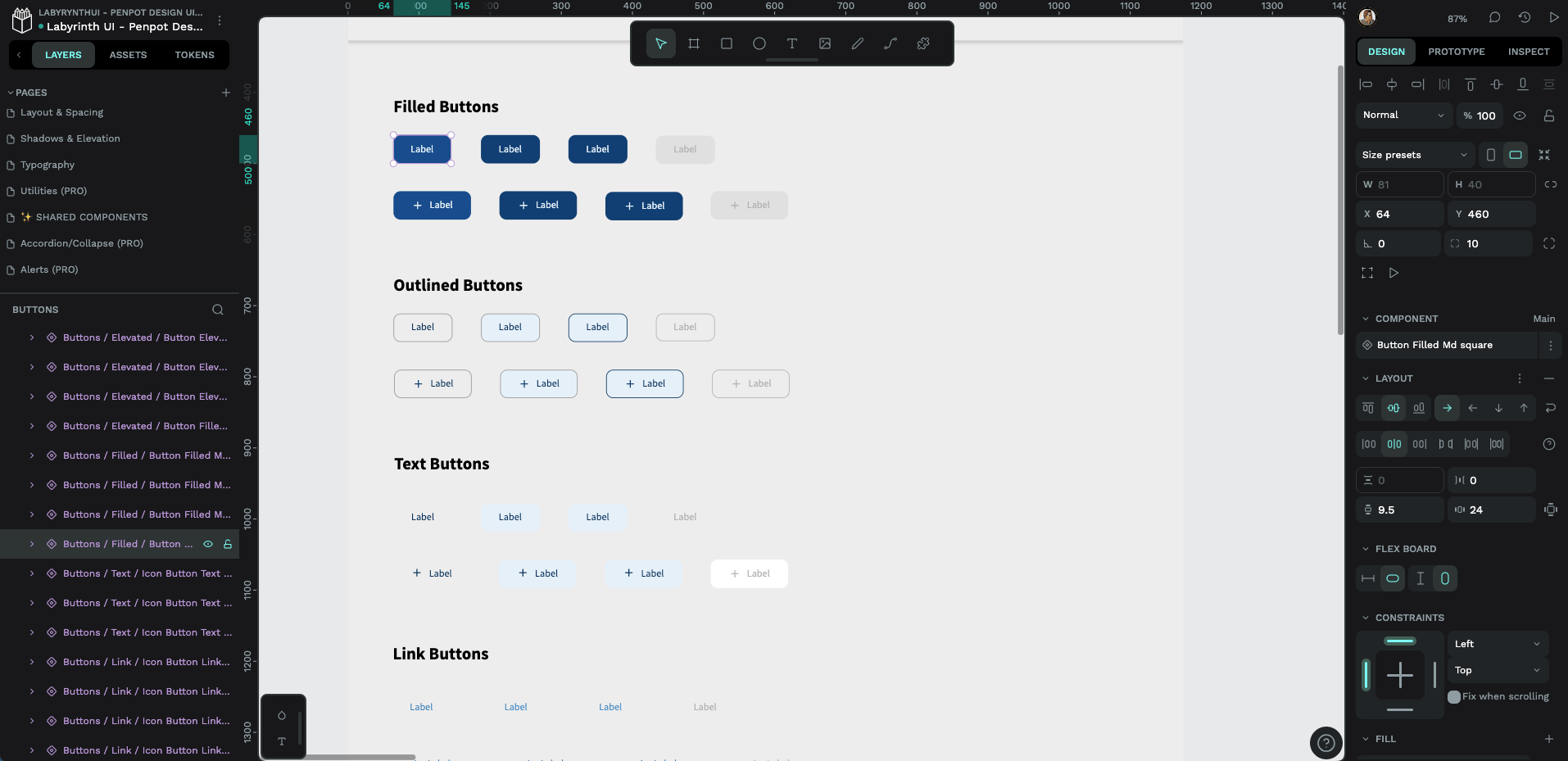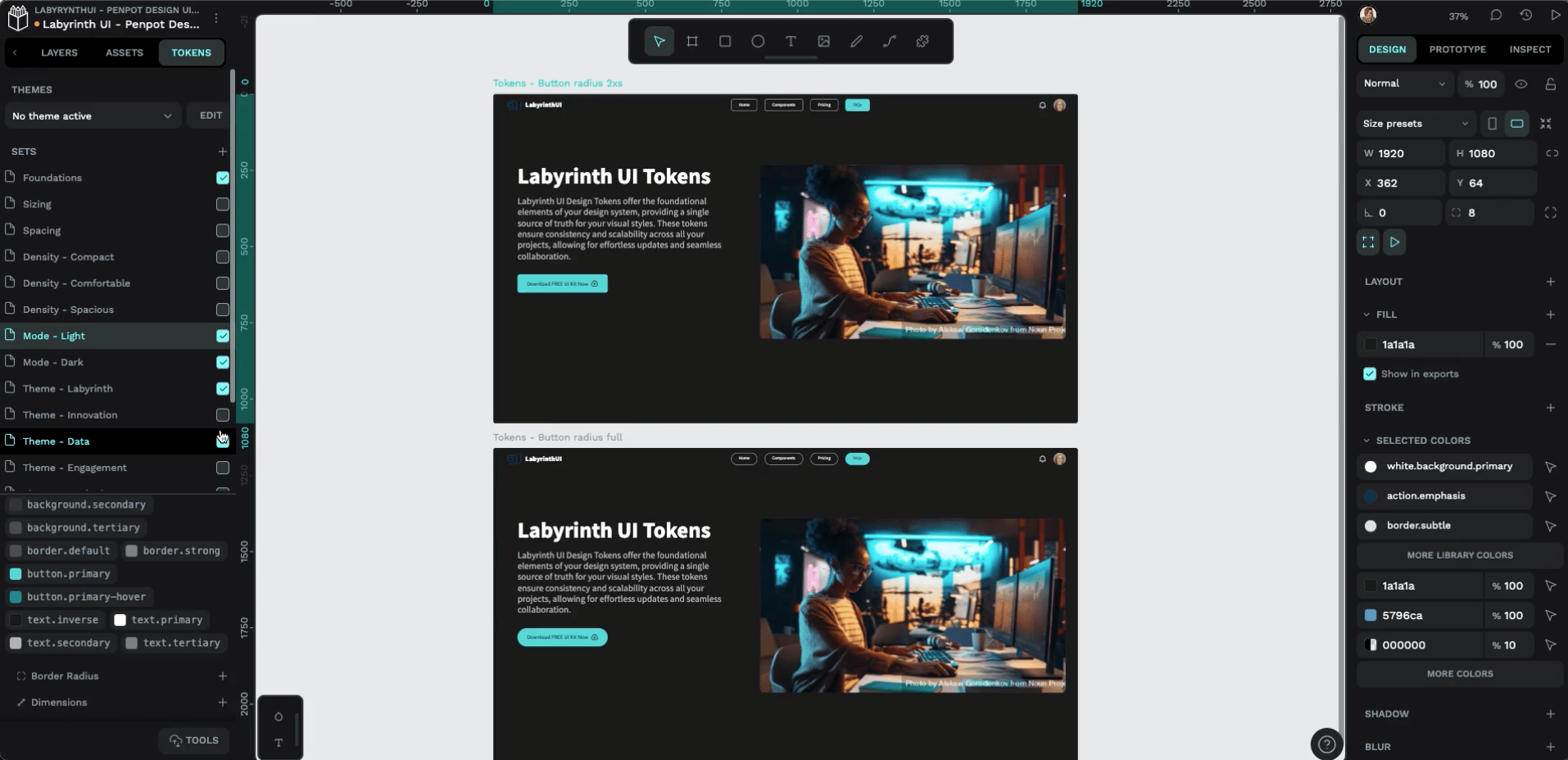Measuring the Real ROI of Your Design System - 3 Steps Guide

When it comes to design systems, everyone loves to talk about consistency, creativity, and happier designers.
But let’s be honest - managers want to see numbers, not just nicer buttons.
They care about faster launches, reduced costs, and scalable products.
So, how do you prove the true business value of a design system like Labyrinth UI?
Let’s break it down.
Why most design system pitches fall flat
Typical design system pitches sound like this:
“Our UI will be more consistent.”
“Designers will be more satisfied.”
“Our brand will look stronger.”
These are nice outcomes, but they’re hard to measure - and even harder to tie back to business goals. If you want buy-in from leadership, you need to speak their language: time, money, and results.
Step 1:
Quantify your current reality
Before you can demonstrate value, you need to know what you’re spending now.
Ask yourself:
How many hours do designers and developers spend rebuilding the same components?
What’s the cost of inconsistent handoffs, rework, or design debt?
How much time is lost searching for assets, icons, or color codes?
Every hour spent on these tasks is money out the door.
Calculate your team’s hourly rate and tally up the hours wasted each month. This is your baseline.

Step 2:
Test Labyrinth UI in the real world
Now, let’s see what happens when you introduce Labyrinth UI:
1. Choose 3–5 core screens from your product.
2. Build them using your old process - track the time spent.
3. Rebuild them using Labyrinth UI’s 2,000+ Penpot native components, tokens, and layouts.
4. Compare the time spent. Multiply the hours saved by your team’s hourly rate.
That’s your direct, measurable savings.

Video: Changing light & dark modes and themes with Labyrinth UI Tokens
Step 3:
Scale the savings
Don’t stop at one project.
Multiply those savings across:
All your product teams
Every release cycle
Every new designer or developer you onboard
Factor in the reduced bugs, less rework, and faster onboarding. Suddenly, the savings aren’t just a line item - they’re a competitive advantage.

The Business Impact: By the (real) numbers
Based on my previous experience when company I worked for invested in the design system (and the analysis we had):
40 - 50% faster time to market for new features/requests
35 - 50% reduction in development costs by eliminating redundant work (using code library)
40% productivity boost for designers
Consistent, accessible, and brand-aligned UIs - every single time
Conclusion:
From cost center to growth engine
You can’t prove the value of a design system if you don’t know what you’re spending now. With Labyrinth UI, you can optimize and scale your design process - turning design from a cost center into a growth engine.
Ready to see the ROI for yourself? Then stop guessing and start measuring.
Try Labyrinth UI and transform the way your team builds, ships, and scales digital products.
See all